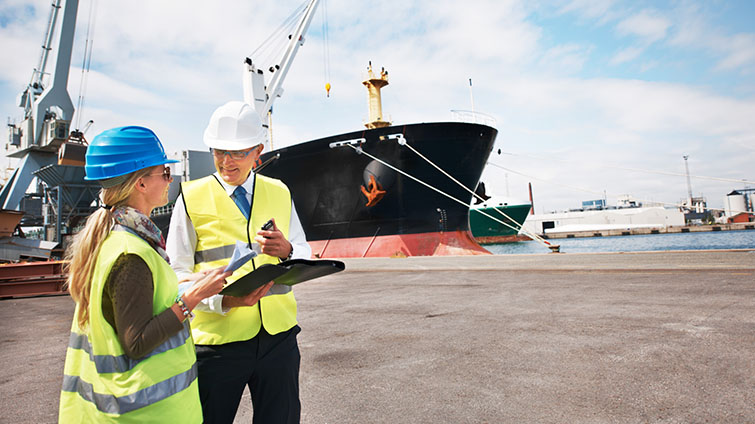New tariffs hit U.S. imports: What it means for trade
Published: Thursday, August 07, 2025 | 06:00 AM CDT
New U.S. reciprocal tariff rates
The pause on higher U.S. reciprocal tariffs that was scheduled to end August 1 resulted in goods from 68 countries being subject to new rates as of August 7, 2025. Goods from several Southeast Asian countries are tariffed at 19% or 20%.
An in-transit exception is allowed for goods that were loaded on the mother vessel and in transit on the final mode before 12:01 a.m. ET on August 7, 2025, and will be entered for consumption (or withdrawn from warehouse for consumption) before 12:01 a.m. ET on October 5, 2025. The in-transit exception is not allowed for other modes of transportation.
India, which had widely been expected to make a trade deal with the United States, ended up with a 25% reciprocal rate on its goods. An additional 25% tariff was subsequently announced, related to the U.S. administration’s concerns about India’s purchases of Russian oil. The additional tariff is slated to go into effect August 27, 2025. An in-transit exception is set to expire September 17, 2025.
See our U.S. reciprocal tariff tracker for the new rates by country. Any countries not listed with specific rates in the executive order will be subject to a 10% “baseline” rate. Goods found to be transshipped to avoid the reciprocal tariff will be subject to a 40% rate.
Meanwhile, the 90-day pause on higher tariffs for Chinese goods is set to expire August 12, 2025, but the United States and China have signaled this deadline could be extended.
Changes to tariffs on U.S. imports from Canada and Mexico
Tariffs intended to stem the flow of illicit drugs were raised to 35% on goods from Canada as of August 1, 2025. A similar increase to 30% for Mexican goods was also put forward. But as of July 31, the White House announced that the drug-related tariff would remain at 25% for at least 90 days, through October 30, 2025.
Goods compliant with the U.S.-Mexico-Canada Free Trade Agreement (USMCA) remain exempt. Goods found to have been transshipped to avoid the additional tariff do not qualify for USMCA and will be subject to a 40% tariff instead of 35%.
Use our U.S. Tariff Timeline to track key dates, tariff rate changes, and country-specific updates.
Recent trade deals
The days leading up to the August 1 deadline brought several announcements of trade deals, including:
- European Union: 15% tariff. See the fact sheet.
- South Korea: 15% tariff. While the rate has been established, implementation details have not been officially published yet.
- Japan: 15% tariff. See the fact sheet.
- Indonesia: 19% tariff. See the framework.
See the automotive insights section of this report for specifics on how the trade deals apply to imported vehicles and auto parts.
A 50% U.S. tariff on copper imports
Effective August 1, 2025, the 50% tariff applies to all imports of semi-finished copper and products containing copper. See the product list and go to the automotive insights section of this report for details on how the automotive industry will be affected. Any goods admitted into a Foreign Trade Zone (FTZ) must be admitted as “privileged foreign” status, and duty drawback is not allowed.
Brazil goods targeted with new 40% U.S. tariff
Under the International Emergency Economic Powers Act (IEEPA), the United States has imposed a tariff of 40% on Brazilian imports effective August 6, 2025. The executive order includes a list of products that are exempted. There’s also an exception for goods currently in transit, which will be applied if arriving to the United States or withdrawn from a warehouse for consumption on or after October 5, 2025.
The 40% is additive to the U.S. reciprocal tariff of 10%, bringing the total rate to 50%.
See our ocean shipping insights and air freight insights to learn how the Brazilian market is being affected.
De minimis duty-free shipping to the U.S. ends August 29
After the White House ended the de minimis exception for low-value imports from China and Hong Kong this spring, a new executive order has ended it for goods from the rest of the world. The policy had allowed goods valued under $800 to be shipped duty free and without U.S. Customs paperwork. Starting August 29, 2025, country-specific tariff rates will apply. For postal shipments, specific duties ranging from $80 to $200 per item may be temporarily available for the next six months.
U.S. tariff court case may be decided in the next few weeks
Arguments were heard July 31 regarding the legality of the White House using emergency powers to implement tariffs. This challenge pertains only to tariffs imposed under the International Emergency Economic Powers Act (IEEPA), such as the tariffs imposed on Chinese, Canadian and Mexican goods to curb illegal drugs. Section 232 tariffs on specific commodities are not part of the case.
No ruling has been issued yet, but a decision is expected within the next few weeks. If the Appeals Court upholds the lower court’s ruling striking down the use of IEEPA to impose tariffs, the U.S. administration is likely to appeal again, and IEEPA tariffs are expected to remain in effect pending a Supreme Court decision.
As country-specific trade deal details are released and executive orders signed, visit our Trade & Tariff Insights page for the latest news, insights, and resources from our experts—and to sign up for alerts.
 Download slides
Download slides